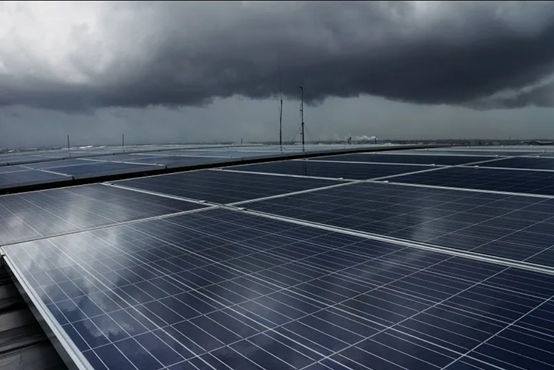
Solar panels play a vital role in converting sunlight into electricity through the photovoltaic effect. However, their performance can be affected by cloudy weather conditions. This article explores the extent to which solar panels work on cloudy days, analyzes the impact on power generation efficiency compared to sunny days, and provides a comparative evaluation of different solar cell types in overcast and rainy conditions.
The Impact of Cloudy Weather on Power Generation Efficiency and Supporting Data:Solar panels function by converting sunlight into electricity through the photovoltaic effect. Nevertheless, cloudy weather introduces two primary factors that affect the electricity generation capacity of solar panels.
Light Intensity: Cloudy days witness reduced sunlight intensity due to scattering and absorption by cloud cover. Data from the U.S. Department of Energy (DOE) reveals that the intensity of sunlight on cloudy days typically ranges between 20% and 70% of that on sunny days.
Spectral Distribution: Cloudy weather alters the spectral distribution of sunlight. On such days, the proportion of red light increases while the proportion of blue light decreases. This spectral change has a significant impact on specific types of solar cells.
Based on research and experimental data, solar panels on cloudy days typically achieve power generation efficiencies ranging from 30% to 70% of those on sunny days. Consequently, solar panels can still generate electricity on cloudy days, albeit with reduced efficiency.
Comparative Analysis of Different Solar Cell Types in Overcast and Rainy Conditions:Different solar cell types exhibit varying performance in overcast and rainy conditions. Here is a comparative evaluation of two common solar cell types and their performance on cloudy days:
 |
 |
| Monocrystalline solar cell | Monocrystalline solar panel |
Monocrystalline Silicon Solar Cells: Monocrystalline silicon cells boast high conversion efficiency and excellent performance stability. They outperform other solar cell types in cloudy weather due to their adaptability to low-light conditions. Data suggests that monocrystalline silicon cells can maintain power generation efficiencies of approximately 60% to 70% of those achieved on sunny days during overcast weather.
 |
 |
| Polysilicon solar cell | Polysilicon Solar Panel |
Polycrystalline Silicon Solar Cells: Polycrystalline silicon cells are prevalent and cost-effective. However, their power generation efficiency tends to be slightly lower than that of monocrystalline silicon cells in cloudy weather. Research indicates that polycrystalline silicon cells achieve power generation efficiencies of around 40% to 60% of those achieved on sunny days during overcast weather.
In conclusion, solar panels can still operate on cloudy days, albeit with reduced power generation efficiency. Monocrystalline silicon solar cells exhibit better performance than other solar cell types in overcast and rainy weather, with power generation efficiencies approximately 10% to 20% higher than those achieved on sunny days. However, these figures are estimates, as the actual performance depends on various factors such as weather conditions, panel design, and manufacturing processes. Therefore, a comprehensive assessment considering multiple factors is crucial for practical applications.

